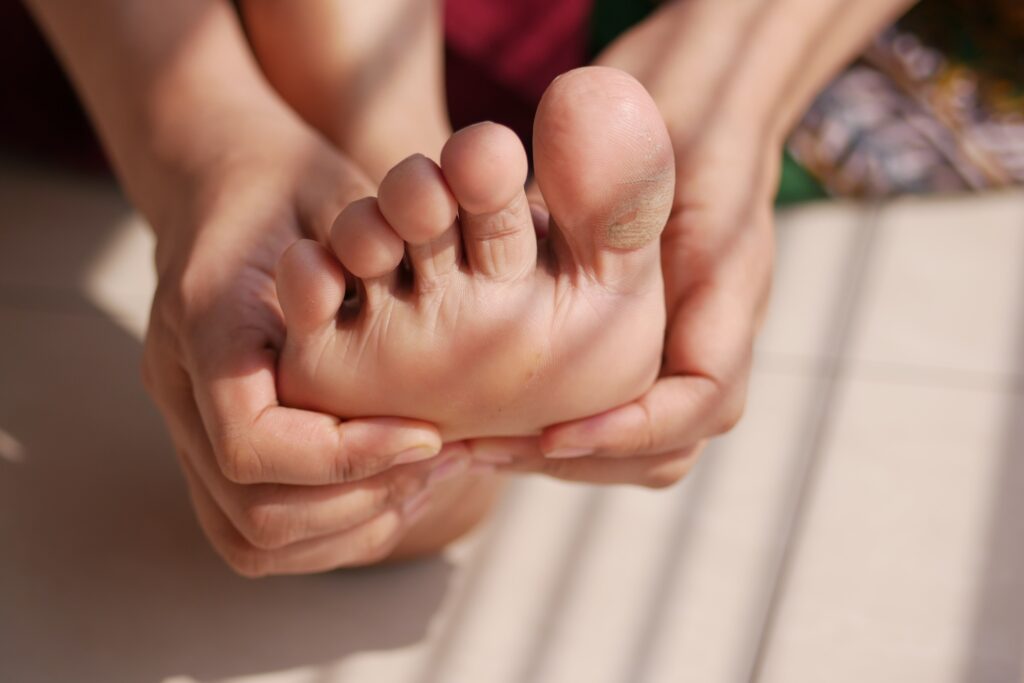Table of Contents
Charcot Foot Overview
Know the Symptoms of Charcot Foot
Symptoms of Charcot foot include:
- A red appearance of the foot/ankle
- Swelling
- Increased warmth compared to the other foot/ankle
- Foot feels warm to the touch
- Soreness
To best prevent Charcot foot from going unnoticed, it’s important to check your feet daily for changes and have regular appointments scheduled with your board-certified podiatrist. You should also always wear shoes and socks, even when you are indoors.
Causes of Charcot Foot
Charcot foot is the result of bone or joint damage. It can begin with peripheral neuropathy, a disease of the nerves. As the nerves are impacted, Charcot foot isn’t often associated with pain as the patient may not sense sensations in their foot.
Another cause of Charcot foot is as a result of minor fractures. When repeated small fractures aren’t felt or don’t heal correctly, the fractures can worsen and Charcot foot can develop.
Diabetics are more likely to suffer from Charcot foot due to diabetes-related neuropathy.
Who is Most at Risk?
Diabetics are most at risk for developing Charcot foot, especially those who have had diabetes for several years.
Other risk factors include those who:
- Regularly smoke
- Regularly consume alcohol
- Have high blood pressure
- Have high cholesterol
- Suffer from kidney disease
- Are overweight
Diagnosing Charcot Foot
Early diagnosis is crucial to prevent joints from collapsing and deforming the foot. Your board-certified podiatrist will examine your foot and ankle and ask about your symptoms. They may also take the temperature of your feet, as a higher temperature can be a sign of Charcot foot. X-rays and other tests may be used to diagnosis your condition. In some cases, a bone biopsy may be ordered to check for infection.
Treatment Options
Nonsurgical Treatment Options
Surgical Treatment Options
What happens if Charcot Foot isn’t Treated?
If Charcot foot isn’t caught early, the joints or arch in the foot can collapse, causing the foot to become deformed. It also may permanently affect the patient’s ability to use their foot.
Without an early diagnosis, Charcot foot may also cause a foot infection. In severe cases, failure to get treatment can result in the loss of a toe, foot, or leg. The longer Charcot foot is left untreated, the damage becomes worse and the chance of requiring amputation increase.
Contact your board-certified podiatrist if you have any symptoms of Charcot foot!
Prevention Tips
The best prevention method is to have regular check-ups with your board-certified podiatrist and regularly examine your feet. If you feel any loss or change in your ability to feel sensations, call our office!
Other helpful tips include:
- Manage your blood sugar levels to slow any potential nerve damage.
- Wear shoes and socks, even when you’re indoors.
- Get fit for custom orthotics.
- Stop any activity that is causing foot or ankle pain.
- Maintain blood flow to your feet by wiggling your toes often and elevating your feet.
- See your podiatrist at least once per year if you have neuropathy or diabetes
While Charcot foot is rare, it’s important to be on the lookout for its symptoms! If you have any questions, ask your healthcare provider.


